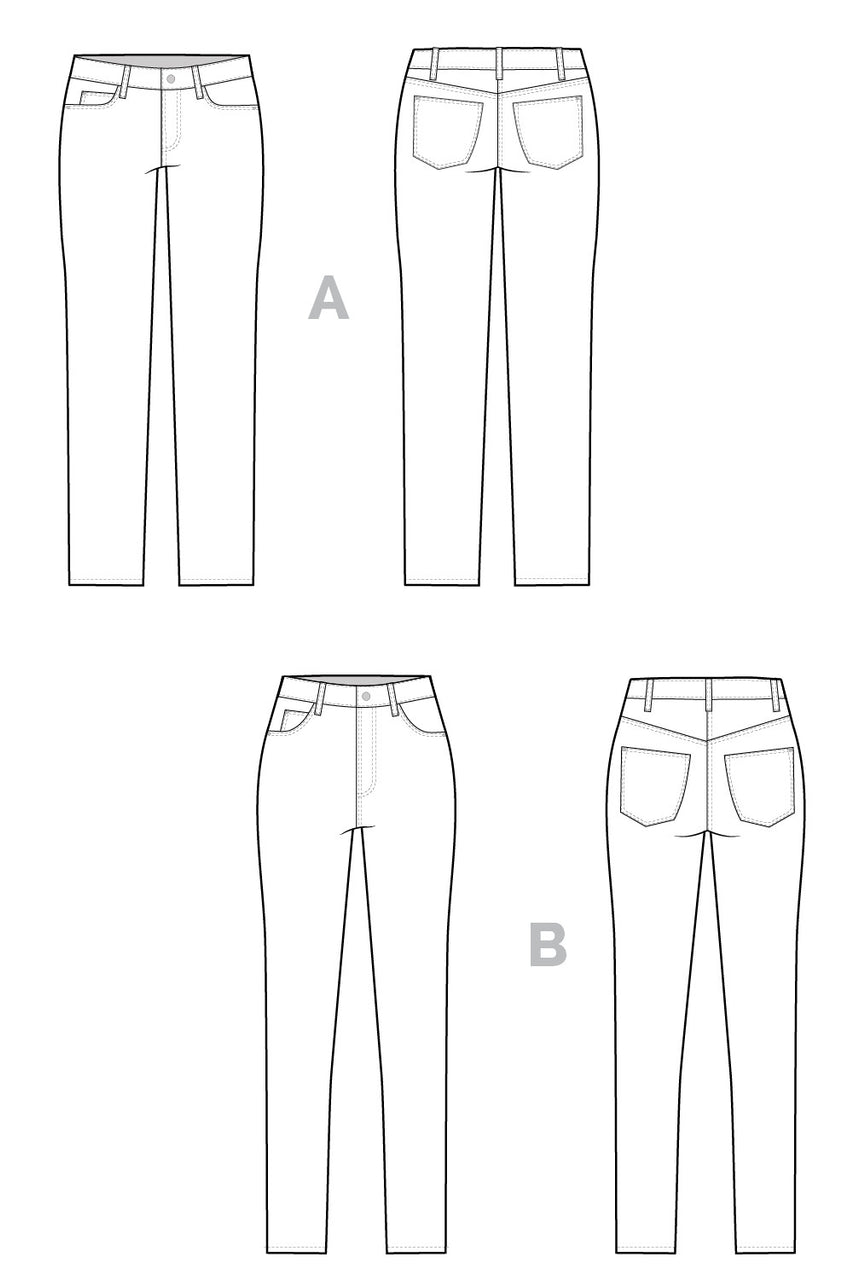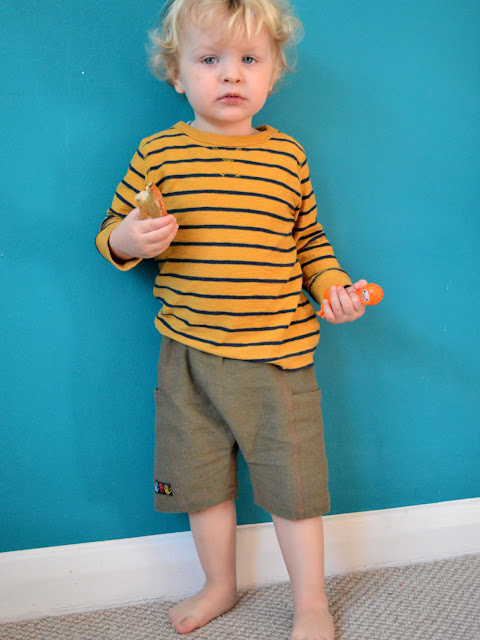I've made Dolores a few garments in recent months that have not been well received. So annoying! Despite me running the garment concept by her first, by which I mean showing her the intended fabric and pattern, and her making subsequent positive sounds, she's then either down-graded the finished item to sleepwear, or flat out told me I can take it to a charity shop! (This dress is the most recent garment that she declared could be given away, although I'm hanging on to it and waiting to see if she'll warm to it when she grows a bit and the bodice fits her more closely.)
I'm not sure if it's because the garments didn't end up looking like she pictured in her head, or that she was just being positive to make me happy when I first pitched her my plans. I've been careful not to let my frustration show, for fear of making the whole me-sewing-for-her thing emotionally charged in any way. Anyways, when she recently requested that I make her a specific garment, a denim pinafore like my denim leftovers Cleo, I was thrilled. I hoped that, if I stuck closely to her brief, I would be able to put some of my sewing time and energy into making her something that would definitely get some wear.
Pattern:
To fulfil the brief of child's denim pinafore, I bought the Freddie dungarees pattern by Two Stitches, which includes a pinafore version as well as the dungarees. I probably would have bought the Penny Pinny pattern by Made By Jack's Mum instead if I'd seen if before I'd bought the Freddie pattern, as it's closer in appearance to my Cleo. However, at least I now have the dungarees version of the Freddie pattern as well, that I could use for either of my kids in the future.
(image source: Two Stitches Patterns)
The paper version of this pattern takes the form of a cute little booklet with stitched-in instruction pages, and a section where the folded pattern sheets can be tucked away. The booklet includes a page where you can add your own notes, which was useful because I found quite a few things whilst I used this pattern worthy of note. Generally speaking, this pattern was very pleasant to use, however I have one massive gripe which is the tiny seam allowance. I'd be cool with a 6mm seam allowance on a knit project, however on a woven garment like this that has lined section and parts that require turning through, it felt just too small. I wish I'd noticed this before I cut out my traced-off pieces, otherwise I would have added extra to make them 1cm or 1.5cm instead.
I had a couple of other minor issues with this pattern that may or may not be worth mentioning: a flaw in the cutting guide/lay plan, plus no indication of how far from the edges to stitch the rows o topstitching. Previous experience of making adult-sized denim pinafores and dungarees lead me to make a couple of other additions/changes. I felt the addition of interfacing was necessary on the button plackets and on the inside of the front bib around the areas where the buttons would be applied. The jeans buttons that I intended to use get subjected to quite a bit of tugging, so I wanted those areas stabilised. I changed the method of construction for the straps, plus I made the straps narrower so they would fit the buckles without having to be scrunched up like the sample pictured on their website. I also added topstitching on the straps, and stitched through the elastic at the back to make gathering sit evenly.
Fabric:
Aside from the additional dungarees view that's included, the other thing the Freddie pattern has over the Penny Pinny pattern is that it is comprised of lots of pieces and panels. On one hand, that made it more time consuming to trace and cut out, but on the other, it allowed me squeeze this pinafore from fabric harvested from a failed garment project. About four or five years ago, I got a length of bark weave stretch denim from Fabric Godmother that I attempted to make into some cigarette trousers using a pattern from the Gertie Sews Vintage Casual book. That project was a total bust. I lacked any knowledge of trouser fitting at that time, but even with both my mum and the Pants for Real People fitting book at my side for help and advice, we just could not work out how to improve the monstrosity that I was attempting to fit to my body. In the end, I just abandoned that project (and trouser making generally for a number of years). I'm so glad that I kept that fail though, as it was the perfect weight of denim for this project. The slight stretch content is going to make it extra comfy to move around in, plus I'm excited to see how the denim fades after a few washes.
The fabric I used for the lining was also from my stash. This ditsy faux-liberty cotton lawn has been hanging out in there for years (I used some of it for this blouse, among other projects). After this pinafore project, I used the very last of it up by making a couple of hankies for a friend.
Thoughts:
Aside choosing to make deviations on the fly here and there, this was a very satisfying project. You know me, I loves me some topstitching. I'm still questioning if another pattern would have given more a smoother ride and a better finished item, but generally I'm really happy with how it turned out. In addition to the points I made above, I'm not sure that I'd line all the pockets next time. You don't really get to enjoy the floral fabric when using the pockets, and I kind of dislike the flashes of contrast that you get round the edges of the pocket (despite me cutting the pocket linings slightly smaller that the outer pocket pieces to avoid that happening). I'm not entirely sure what the point of the elastic at the back is either, maybe it makes more sense for the dungarees version. If I use this pattern again, I probably won't bother with the elastic in the back, as I just don't feel the fabric really needs 'controlling' back there. Speaking of fabric, I am thrilled from both a financial AND a sustainability angle that I was able to stash-and-scrap bust this whole project.
But my thoughts on this garment don't really matter, do they? What DOES matter, is that Dolores seems to have embraced this pinafore (phew)! She wore it shortly after its completion when we went to visit some friends in London, and she looked so cute in her mini-me look. The weather has got super hot lately, so I don't expect to see her in it again for a while, but I hope she embraces it again, and can be encouraged to wear it with long-sleeved t-shirts and knitwear underneath when the weather cools back down.























